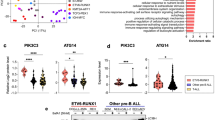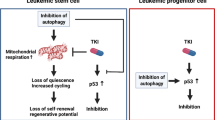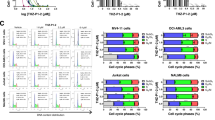Abstract
Bortezomib (bort) has improved overall survival in patients with multiple myeloma (MM), but the majority of them develop drug resistance. In this study, we demonstrate that bone marrow (BM) fibroblasts (cancer-associated fibroblasts; CAFs) from bort-resistant patients are insensitive to bort and protect the RPMI8226 and patients’ plasma cells against bort-induced apoptosis. Bort triggers CAFs to produce high levels of interleukin (IL)-6, IL-8, insulin-like growth factor (IGF)-1 and transforming growth factor (TGF) β. Proteomic studies on CAFs demonstrate that bort resistance parallels activation of oxidative stress and pro-survival autophagy. Indeed, bort induces reactive oxygen species in bort-resistant CAFs and activates autophagy by increasing light chain 3 protein (LC3)-II and inhibiting p62 and phospho-mammalian target of rapamycin. The small-interfering RNA knockdown of Atg7, and treatment with 3-methyladenine, restores bort sensitivity in bort-resistant CAFs and produces cytotoxicity in plasma cells co-cultured with CAFs. In the syngeneic 5T33 MM model, bort-treatment induces the expansion of LC3-II+ CAFs. TGFβ mediates bort-induced autophagy, and its blockade by LY2109761, a selective TβRI/II inhibitor, reduces the expression of p-Smad2/3 and LC3-II and induces apoptosis in bort-resistant CAFs. A combination of bort and LY2109761 synergistically induces apoptosis of RPMI8226 co-cultured with bort-resistant CAFs. These data define a key role for CAFs in bort resistance of plasma cells and provide the basis for a novel targeted therapeutic approach.
This is a preview of subscription content, access via your institution
Access options
Subscribe to this journal
Receive 12 print issues and online access
$259.00 per year
only $21.58 per issue
Buy this article
- Purchase on Springer Link
- Instant access to full article PDF
Prices may be subject to local taxes which are calculated during checkout




Similar content being viewed by others
References
Hideshima T, Richardson P, Chauhan D, Palombella VJ, Elliott PJ, Adams J et al. The proteasome inhibitor PS-341 inhibits growth, induces apoptosis, and overcomes drug resistance in human multiple myeloma cells. Cancer Res 2001; 61: 3071–3076.
Ruschak AM, Slassi M, Kay LE, Schimmer AD . Novel proteasome inhibitors to overcome bortezomib resistance. J Natl Cancer Inst 2011; 103: 1007–1017.
Lohr JG, Stojanov P, Carter SL, Cruz-Gordillo P, Lawrence MS, Auclair D et al. Widespread genetic heterogeneity in multiple myeloma: implications for targeted therapy. Cancer Cell 2014; 25: 91–101.
Abdi J, Chen G, Chang H . Drug resistance in multiple myeloma: latest findings and new concepts on molecular mechanisms. Oncotarget 2013; 4: 2186–2207.
Shringarpure R, Catley L, Bhole D, Burger R, Podar K, Tai YT et al. Gene expression analysis of B-lymphoma cells resistant and sensitive to bortezomib. Br J Haematol 2006; 134: 145–156.
Chng WJ, Gualberto A, Fonseca R . IGF-1 R is overexpressed in poor-prognostic subtypes of multiple myeloma. Leukemia 2006; 20: 174–176.
Moschetta M, Basile A, Ferrucci A, Frassanito MA, Rao L, Ria R et al. Novel targeting of phospho-cMET overcomes drug resistance and induces antitumor activity in multiple myeloma. Clin Cancer Res 2013; 19: 4371–4382.
Zhou L, Hou J, Fu W, Wang D, Yuan Z, Jiang H . Arsenic trioxide and 2-methoxyestradiol reduce beta-catenin accumulation after proteasome inhibition and enhance the sensitivity of myeloma cells to Bortezomib. Leuk Res 2008; 32: 1674–1683.
Hoang B, Benavides A, Shi Y, Frost P, Lichtenstein A . Effect of autophagy on multiple myeloma cell viability. Mol Cancer Ther 2009; 8: 1974–1984.
Parzych KR, Klionsky DJ . An overview of autophagy: morphology, mechanism, and regulation. Antioxid Redox Signal 2014; 20: 460–473.
Dalby KN, Tekedereli I, Lopez-Berestein G, Ozpolat B . Targeting the prodeath and prosurvival functions of autophagy as novel therapeutic strategies in cancer. Autophagy 2010; 6: 322–329.
Markovina S, Callander NS, O'Connor SL, Xu G, Shi Y, Leith CP et al. Bone marrow stromal cells from multiple myeloma patients uniquely induce bortezomib resistant NF-kappaB activity in myeloma cells. Mol Cancer 2010; 9: 176.
Hao M, Zhang L, An G, Meng H, Han Y, Xie Z et al. Bone marrow stromal cells protect myeloma cells from bortezomib induced apoptosis by suppressing microRNA-15a expression. Leuk Lymphoma 2011; 52: 1787–1794.
Wang J, Hendrix A, Hernot S, Lemaire M, De Bruyne E, Van Valckenborgh E et al. Bone marrow stromal cell-derived exosomes as communicators in drug resistance in multiple myeloma cells. Blood 2014; 124: 555–566.
Kalluri R, Zeisberg M . Fibroblasts in cancer. Nat Rev Cancer 2006; 6: 392–401.
Togo S, Polanska UM, Horimoto Y, Orimo A . Carcinoma-associated fibroblasts are a promising therapeutic target. Cancers (Basel) 2013; 5: 149–169.
Paraiso KH, Smalley KS . Fibroblast-mediated drug resistance in cancer. Biochem Pharmacol 2013; 85: 1033–1041.
De Veirman K, Rao L, De Bruyne E, Menu E, Van Valckenborgh E, Van Riet I et al. Cancer associated fibroblasts and tumor growth: focus on multiple myeloma. Cancers (Basel) 2014; 6: 1363–1381.
Frassanito MA, Rao L, Moschetta M, Ria R, Di Marzo L, De Luisi A et al. Bone marrow fibroblasts parallel multiple myeloma progression in patients and mice: in vitro and in vivo studies. Leukemia 2014; 28: 904–916.
Moreau P, Pylypenko H, Grosicki S, Karamanesht I, Leleu X, Grishunina M et al. Subcutaneous versus intravenous administration of bortezomib in patients with relapsed multiple myeloma: a randomised, phase 3, non-inferiority study. Lancet Oncol 2011; 12: 431–440.
Meads MB, Hazlehurst LA, Dalton WS . The bone marrow microenvironment as a tumor sanctuary and contributor to drug resistance. Clin Cancer Res 2008; 14: 2519–2526.
Pietrocola F, Izzo V, Niso-Santano M, Vacchelli E, Galluzzi L, Maiuri MC . Regulation of autophagy by stress-responsive transcription factors. Semin Cancer Biol 2013; 23: 310–322.
Jung CH, Ro SH, Cao J, Otto NM, Kim DH . mTOR regulation of autophagy. FEBS Lett 2010; 584: 1287–1295.
Kabeya Y, Mizushima N, Yamamoto A, Oshitani-Okamoto S, Ohsumi Y, Yoshimori T . LC3, GABARAP and GATE16 localize to autophagosomal membrane depending on form-II formation. J Cell Sci 2004; 117: 2805–2812.
Pankiv S, Clausen TH, Lamark T, Brech A, Bruun JA, Outzen H et al. p62/SQSTM1 binds directly to Atg8/LC3 to facilitate degradation of ubiquitinated protein aggregates by autophagy. J Biol Chem 2007; 282: 24131–24145.
Tanida I, Ueno T, Kominami E . LC3 conjugation system in mammalian autophagy. Int J Biochem Cell Biol 2004; 36: 2503–2518.
Seglen PO, Gordon PB . 3-Methyladenine: specific inhibitor of autophagic/lysosomal protein degradation in isolated rat hepatocytes. Proc Natl Acad Sci USA 1982; 79: 1889–1892.
Harris J . Autophagy and cytokines. Cytokine 2011; 56: 140–144.
Martinez-Outschoorn UE, Whitaker-Menezes D, Lin Z, Flomenberg N, Howell A, Pestell RG et al. Cytokine production and inflammation drive autophagy in the tumor microenvironment: role of stromal caveolin-1 as a key regulator. Cell Cycle 2011; 10: 1784–1793.
Kojima Y, Acar A, Eaton EN, Mellody KT, Scheel C, Ben-Porath I et al. Autocrine TGF-beta and stromal cell-derived factor-1 (SDF-1) signaling drives the evolution of tumor-promoting mammary stromal myofibroblasts. Proc Natl Acad Sci USA 2010; 107: 20009–20014.
Connolly EC, Freimuth J, Akhurst RJ . Complexities of TGF-β targeted cancer therapy. Int J Biol Sci 2012; 8: 964–978.
Wang Y, Wu J, Lin B, Li X, Zhang H, Ding H et al. Galangin suppresses HepG2 cell proliferation by activating the TGF-β receptor/Smad pathway. Toxicology 2014; 326: 9–17.
Kuhn DJ, Berkova Z, Jones RJ, Woessner R, Bjorklund CC, Ma W et al. Targeting the insulin-like growth factor-1 receptor to overcome bortezomib resistance in preclinical models of multiple myeloma. Blood 2012; 120: 3260–3270.
Frassanito MA, Cusmai A, Iodice G, Dammacco F . Autocrine interleukin-6 production and highly malignant multiple myeloma: relation with resistance to drug-induced apoptosis. Blood 2001; 97: 483–489.
Lotti F, Jarrar AM, Pai RK, Hitomi M, Lathia J, Mace A et al. Chemotherapy activates cancer-associated fibroblasts to maintain colorectal cancer-initiating cells by IL-17 A. J Exp Med 2013; 210: 2851–2872.
Öhlund D, Elyada E, Tuveson D . Fibroblast heterogeneity in the cancer wound. J Exp Med 2014; 211: 1503–1523.
White E . Deconvoluting the context-dependent role for autophagy in cancer. Nat Rev Cancer 2012; 12: 401–410.
Samali A, Orrenius S . Heat shock proteins: regulators of stress response and apoptosis. Cell Stress Chaperones 1998; 3: 228–236.
Chauhan D, Li G, Shringarpure R, Podar K, Ohtake Y, Hideshima T et al. Blockade of Hsp27 overcomes Bortezomib/proteasome inhibitor PS-341 resistance in lymphoma cells. Cancer Res 2003; 63: 6174–6177.
Feng Z, Zhang H, Levine AJ, Jin S . The coordinate regulation of the p53 and mTOR pathways in cells. Proc Natl Acad Sci USA 2005; 102: 8204–8209.
Li DD, Wang LL, Deng R, Tang J, Shen Y, Guo JF et al. The pivotal role of c-Jun NH2-terminal kinase-mediated Beclin 1 expression during anticancer agents-induced autophagy in cancer cells. Oncogene 2009; 28: 886–898.
Maiuri MC, Zalckvar E, Kimchi A, Kroemer G . Self-eating and self-killing: crosstalk between autophagy and apoptosis. Nat Rev Mol Cell Biol 2007; 8: 741–752.
Martinez-Outschoorn UE, Trimmer C, Lin Z, Whitaker-Menezes D, Chiavarina B, Zhou J et al. Autophagy in cancer associated fibroblasts promotes tumor cell survival: Role of hypoxia, HIF1 induction and NFκB activation in the tumor stromal microenvironment. Cell Cycle 2010; 9: 3515–3533.
Deleu S, Lemaire M, Arts J, Menu E, Van Valckenborgh E, King P et al. The effects of JNJ-26481585, a novel hydroxamate-based histone deacetylase inhibitor, on the development of multiple myeloma in the 5T2MM and 5T33MM murine models. Leukemia 2009; 23: 1894–1903.
Henderson B, Kaiser F . Do reciprocal interactions between cell stress proteins and cytokines create a new intra-/extra-cellular signaling nexus? Cell Stress Chaperones 2013; 18: 685–701.
Suzuki HI, Kiyono K, Miyazono K . Regulation of autophagy by transforming growth factor-β (TGF-β) signaling. Autophagy 2010; 6: 645–647.
Urashima M, Ogata A, Chauhan D, Hatziyanni M, Vidriales MB, Dedera DA et al. Transforming growth factor-beta1: differential effects on multiple myeloma versus normal B cells. Blood 1996; 87: 1928–1938.
Yang ZJ, Chee CE, Huang S, Sinicrope FA . The role of autophagy in cancer: therapeutic implications. Mol Cancer Ther 2011; 10: 1533–1541.
Vakifahmetoglu-Norberg H, Xia HG, Yuan J . Pharmacologic agents targeting autophagy. J Clin Invest 2015; 125: 5–13.
Acknowledgements
This work was supported by the Associazione Italiana per la Ricerca sul Cancro (AIRC), Investigator Grant (no. 14095 to AV); Special Program Molecular Clinical Oncology 5 per 1000 (no. 9965 to AV), Milan, IT; and the European Commission’s Seventh Framework Programme (EU FPT7) OVER-MyR (no. 278706 to AV and KV) and OPTATIO (no. 278570 to DR). Abstract was awarded by Società Italiana di Citometria with “Francesco Mauro” prize. The sponsors of this study are public or no-profit organizations that support science in general; they had no role in gathering, analyzing or interpreting the data.
Author contributions
MAF and AV designed the research, analyzed data and wrote the manuscript. VD and LDM performed research. KDV, EM and KV performed animal studies. DV and MM performed proteomic studies. SR, TA, BN and DR performed confocal dual immunofluorescence studies. IC, RR, VR, EA and DD provided reagents and materials. RF, FD, KDV and KV read and made comments on manuscript.
Author information
Authors and Affiliations
Corresponding authors
Ethics declarations
Competing interests
The authors declare no conflict of interest.
Additional information
Supplementary Information accompanies this paper on the Leukemia website
Supplementary information
Rights and permissions
About this article
Cite this article
Frassanito, M., De Veirman, K., Desantis, V. et al. Halting pro-survival autophagy by TGFβ inhibition in bone marrow fibroblasts overcomes bortezomib resistance in multiple myeloma patients. Leukemia 30, 640–648 (2016). https://doi.org/10.1038/leu.2015.289
Received:
Revised:
Accepted:
Published:
Issue Date:
DOI: https://doi.org/10.1038/leu.2015.289
This article is cited by
-
Multi-omics analysis of multiple myeloma patients with differential response to first-line treatment
Clinical and Experimental Medicine (2023)
-
Metabolic cross-talk within the bone marrow milieu: focus on multiple myeloma
Experimental Hematology & Oncology (2022)
-
The effects and the mechanisms of autophagy on the cancer-associated fibroblasts in cancer
Journal of Experimental & Clinical Cancer Research (2019)
-
Mesenchyme-specific deletion of Tgf-β1 in the embryonic lung disrupts branching morphogenesis and induces lung hypoplasia
Laboratory Investigation (2019)
-
Characterization of carfilzomib-resistant non-small cell lung cancer cell lines
Journal of Cancer Research and Clinical Oncology (2018)



